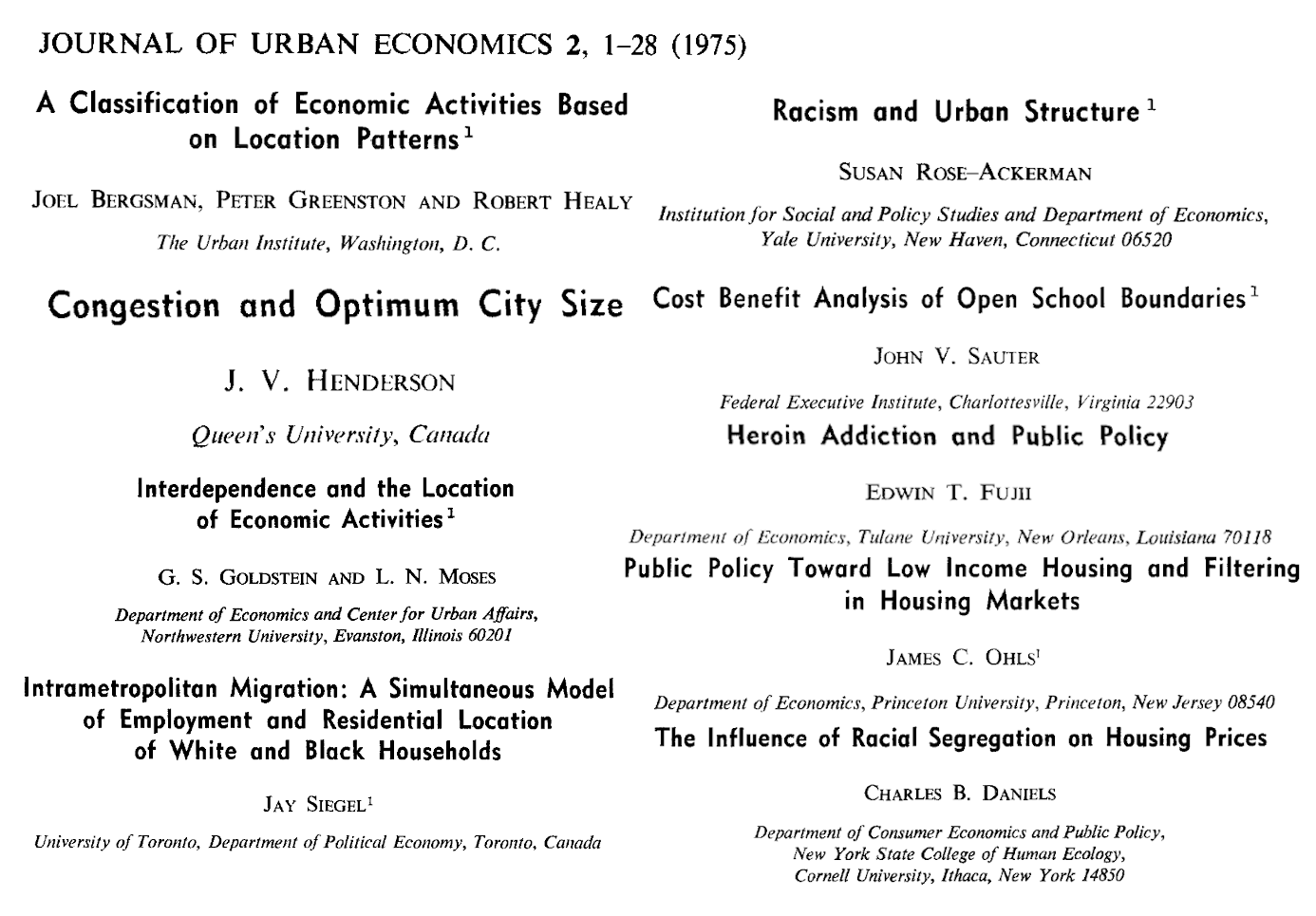U.S. Urban History vs. Urban Economic Theory
The 70s
The 1970s were not a golden era for American cities. White flight accelerated as courts mandated desegregation via busing. Manufacturing declined in cities like Philadelphia and New York; crime rates went up. No one should be surprised that the pathologies of the era filtered their way into the questions urban economists asked at the time. A bolder assertion, one that I’m not going to make here, would be that would be the social climate affected the modeling decisions and results of urban economics research. But I’ll float some evidence to suggest it.
I do think these types of claims can be substantiated through historical research. Kevin Baker’s Model Metropolis article in Logic does a phenomal job documenting the feedback loop between modeling, urban policy, and the political zeitgeist of the era.
Here’s an unrepresentative sample of urban papers from the time:
| Paper | Authors | Claim of interest |
|---|---|---|
| Migration, Unemployment and Development: A Two-Sector Analysis | Harris and Todaro (AER 1970) | Rural-urban migration spurred by expected wage differentials can lead to high urban unemployment. |
| The Sizes and Types of Cities | Henderson (AER 1974) | Cities form because of scale economies external to the firm; cities vary in size because of congestion costs. The decentralized equilibrium features cities that are overpopulated, larger than the optimum city size. |
| Racism and Urban Structure | Rose-Ackerman (JOUE 1975) | “The paper derives equilibrium prices for a racist city and demonstrates that the city is less dense at the core, more dense in the suburbs, and covers a larger area than an unprejudiced city.” |
| Dynamic Instability of a Mixed City in the Presence of Neighborhood Externalities | Miyao (AER 1978) | Cities with racially mixed demographics and “negative intergroup externalities” (hell of a euphemism) are potentially dynamically unstable and may feature either segregation within the city or have the city feature only one group. |
And here’s a more representative sample of titles from the issue of The Journal of Urban Economics in which the Rose-Ackerman article is published.

Triumph of the City

Now that cities are back, baby, the literature has somewhat changed its mind. Instead of recap a cherry-picked sample, I need only to turn to the flurry of popular books that do the job for me. Yes, cities are still sites of agglomeration, but also growth and innovation in the new, creative, service economy (Richard Florida’s Rise of the Creative Class, Moretti’s New Geography of Jobs). Cities are green, and make us healthier, wealthier, and wiser (Ed Glaeser’s Triumph of the City).
Perhaps, though, we are at a turning point, as some cities are becoming increasingly unaffordable while others hollowed out. So now there’s Florida’s New Urban Crisis, and books offering grand solutions like, Matt Yglesias’ One Billion Americans. The literature on problems with contemporary urbanism all presuppose the greatness of cities, and just point to problems like housing supply restrictions, the legacy of redlining, and the threat of climate change, all which restrict urban potential.